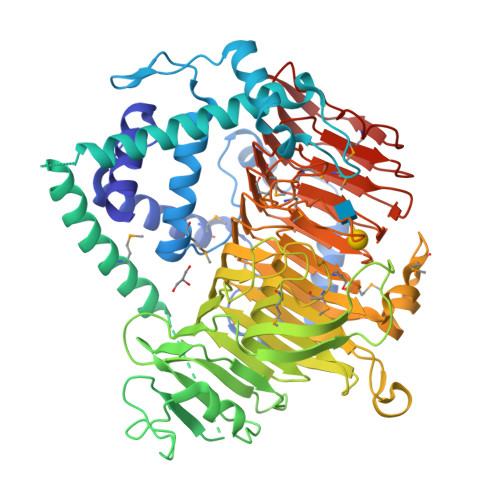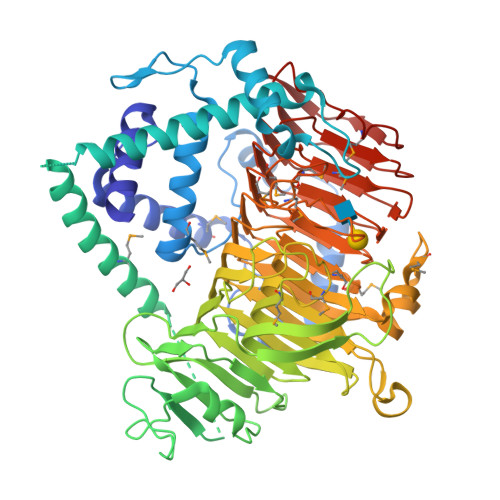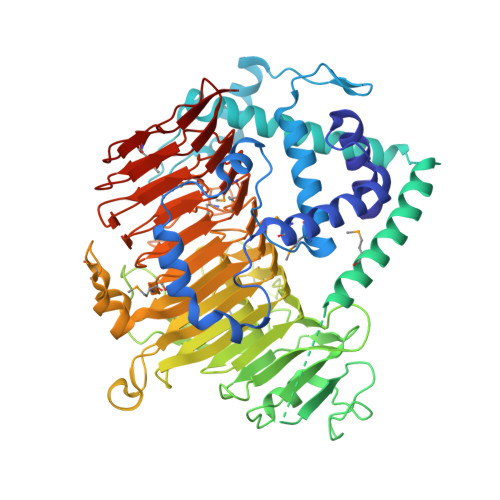Butyrate producing colonic Clostridiales metabolise human milk oligosaccharides and cross feed on mucin via conserved pathways.
Pichler, M.J., Yamada, C., Shuoker, B., Alvarez-Silva, C., Gotoh, A., Leth, M.L., Schoof, E., Katoh, T., Sakanaka, M., Katayama, T., Jin, C., Karlsson, N.G., Arumugam, M., Fushinobu, S., Abou Hachem, M.(2020) Nat Commun 11: 3285-3285
- PubMed: 32620774
- DOI: https://doi.org/10.1038/s41467-020-17075-x
- Primary Citation of Related Structures:
6KQS, 6KQT - PubMed Abstract:
The early life human gut microbiota exerts life-long health effects on the host, but the mechanisms underpinning its assembly remain elusive. Particularly, the early colonization of Clostridiales from the Roseburia-Eubacterium group, associated with protection from colorectal cancer, immune- and metabolic disorders is enigmatic. Here, we describe catabolic pathways that support the growth of Roseburia and Eubacterium members on distinct human milk oligosaccharides (HMOs). The HMO pathways, which include enzymes with a previously unknown structural fold and specificity, were upregulated together with additional glycan-utilization loci during growth on selected HMOs and in co-cultures with Akkermansia muciniphila on mucin, suggesting an additional role in enabling cross-feeding and access to mucin O-glycans. Analyses of 4599 Roseburia genomes underscored the preponderance and diversity of the HMO utilization loci within the genus. The catabolism of HMOs by butyrate-producing Clostridiales may contribute to the competitiveness of this group during the weaning-triggered maturation of the microbiota.
Organizational Affiliation:
Department of Biotechnology and Biomedicine, Technical University of Denmark, 2800, Lyngby, Denmark.





















